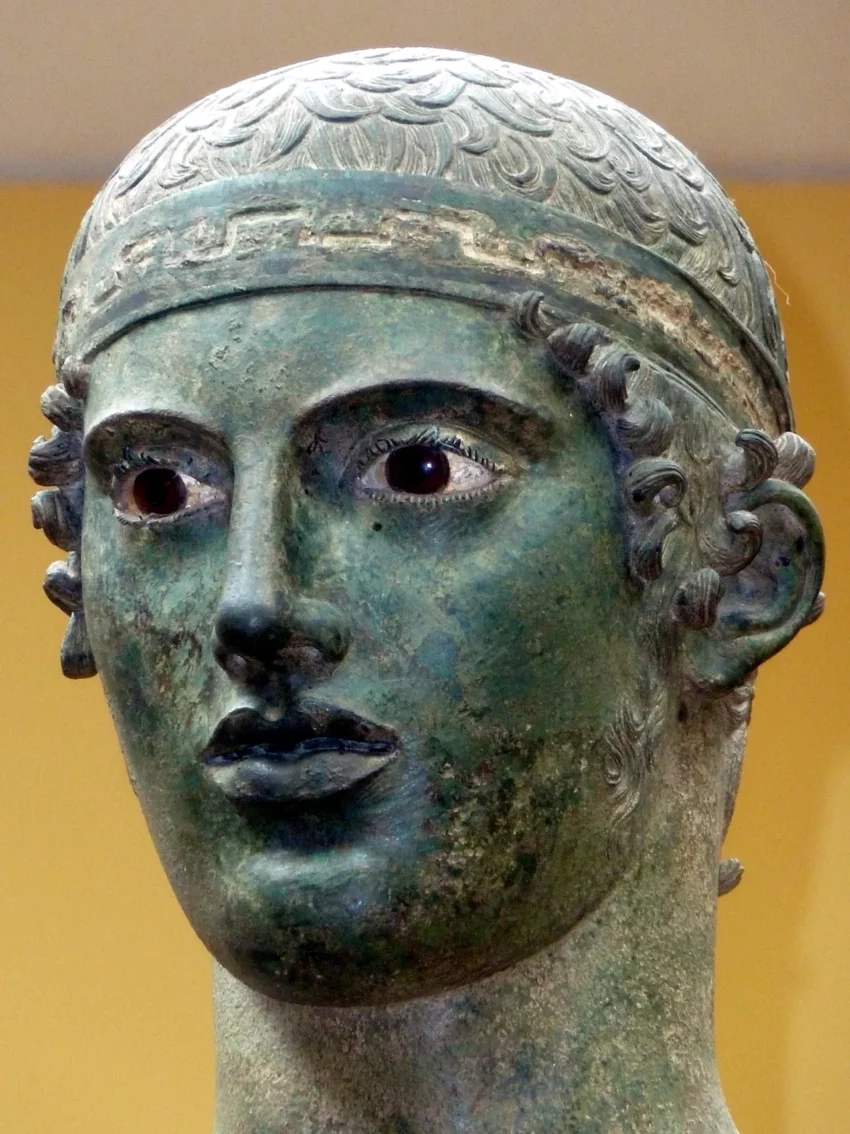The Charioteer of Delphi: An Icon of Ancient Greek Bronze Sculpture
The Charioteer of Delphi, also known as Heniokhos (meaning “the rein-holder” in Greek), is one of the finest examples of ancient Greek bronze sculpture. Standing at 1.8 meters tall, the life-sized statue of a chariot driver was discovered in 1896 at the Sanctuary of Apollo in Delphi. Today, it resides in the Delphi Archaeological Museum, where it continues to captivate visitors with its artistry and historical significance.
Get your dose of History via Email
Historical Background
The Charioteer was originally part of a larger statuary group commissioned to commemorate a victory at the Pythian Games, held at Delphi in honor of Apollo. The Pythian Games were second only to the Olympic Games in prestige. The statue was likely erected by Polyzalus, the tyrant of Gela in Sicily, to celebrate his chariot’s victory in either 478 or 474 BC. Some scholars, however, believe the dedication may have honored his brother, Hieron, in a similar race.
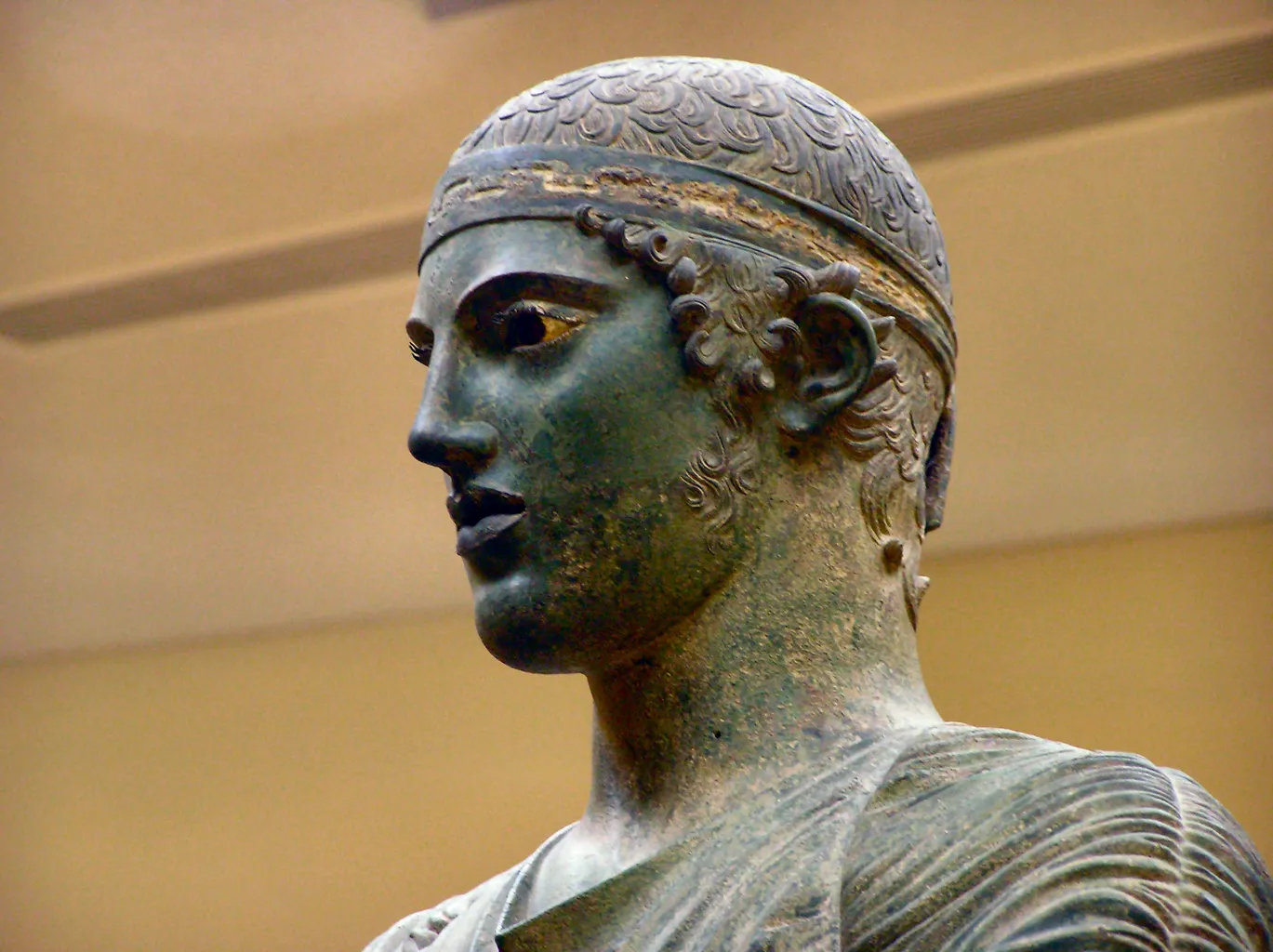
Originally, the Charioteer was part of a grand ensemble that included a chariot, four horses, and possibly two grooms. Fragments of the horses were found alongside the statue, but the Charioteer remains the best-preserved element of this complex. Although the name of the sculptor is lost to history, stylistic comparisons link the work to Athens, suggesting that it was cast there. The statue is also associated with Pythagoras of Rhegion or Calamis, two renowned sculptors of the time.
An inscription found on the base of the statue credits Polyzalus for dedicating the work to Apollo. The text, written in hexameter, reads: “Polyzalus dedicated me… Make him prosper, honored Apollo,” a testament to the ruler’s gratitude for his victory.
The Statue’s Design and Condition
Remarkably, the Charioteer has survived nearly intact, unlike most ancient bronzes, which were often melted down over the centuries. It was buried during a rockfall at Delphi, possibly during an earthquake in 373 BC, which protected it from further damage. The statue was found in three main pieces: the head and upper torso, the lower torso, and the right arm. Today, only a few elements are missing, such as the left forearm, some head details, and the copper inlays once used for the lips and the now mostly lost silver eyelashes and headband.
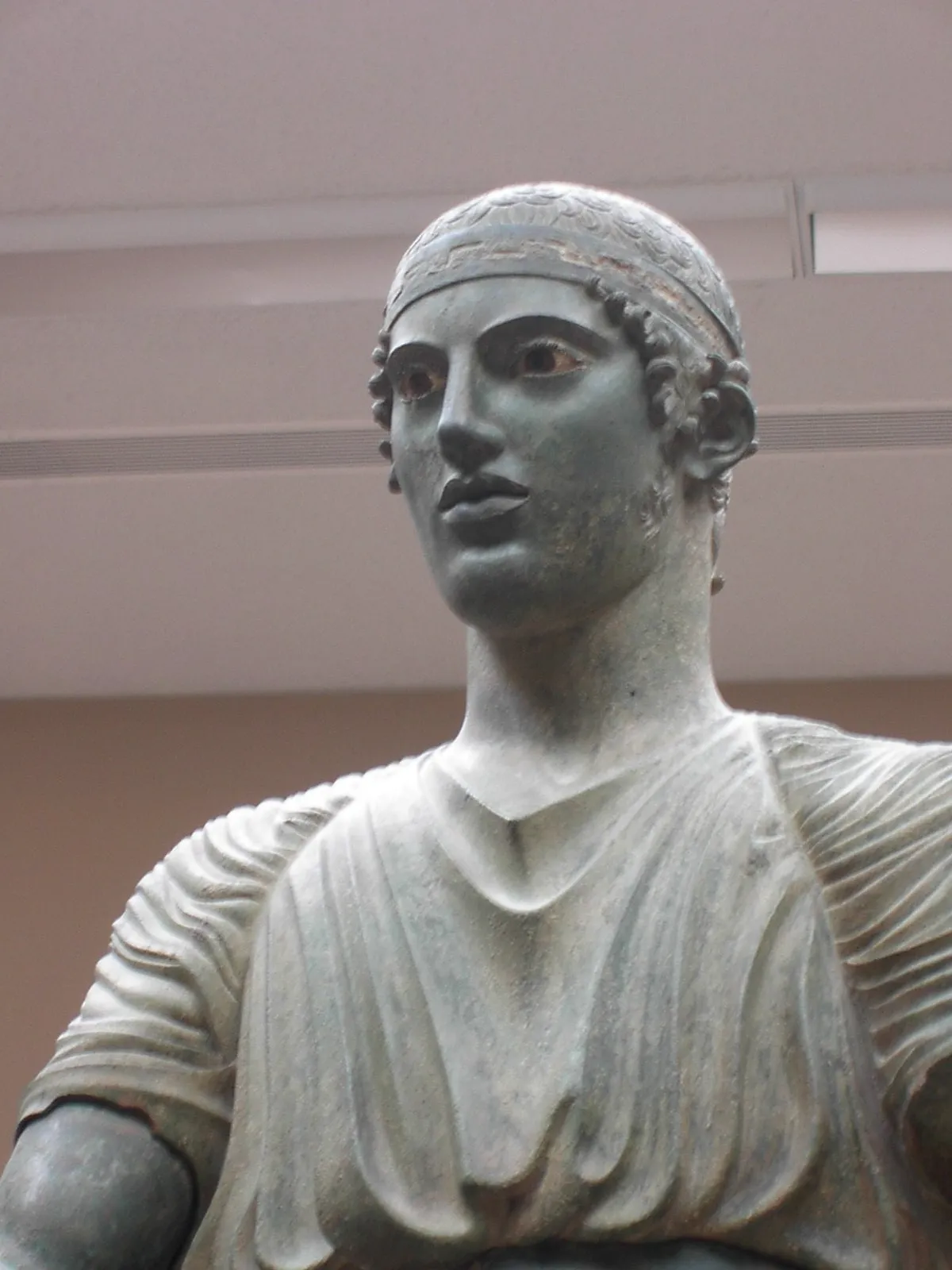
One of the most striking aspects of the statue is its inlaid glass eyes, which give the Charioteer a lifelike gaze, a rarity among surviving ancient bronzes. When it was first discovered, the statue exhibited a bluish hue, likely due to the air conditions inside the sanctuary, as noted by the ancient writer Plutarch. Over time, exposure has caused the statue to take on a more typical greenish patina, though hints of the original bluish coloration remain on the lower torso.
The Charioteer’s attire is also noteworthy. Unlike most Greek athletes, who were typically depicted nude, the Charioteer is fully clothed in a long tunic known as a xystís. This garment, cinched with a high belt and secured with cross-straps, was specifically designed for chariot racing to prevent it from billowing during high-speed races. The fine vertical pleats in the tunic’s lower half resemble the fluting of an Ionic column, adding a sense of architectural grace to the figure’s posture. In contrast, the pleats on the upper half are more fluid, creating a dynamic tension between the statue’s static and moving elements.
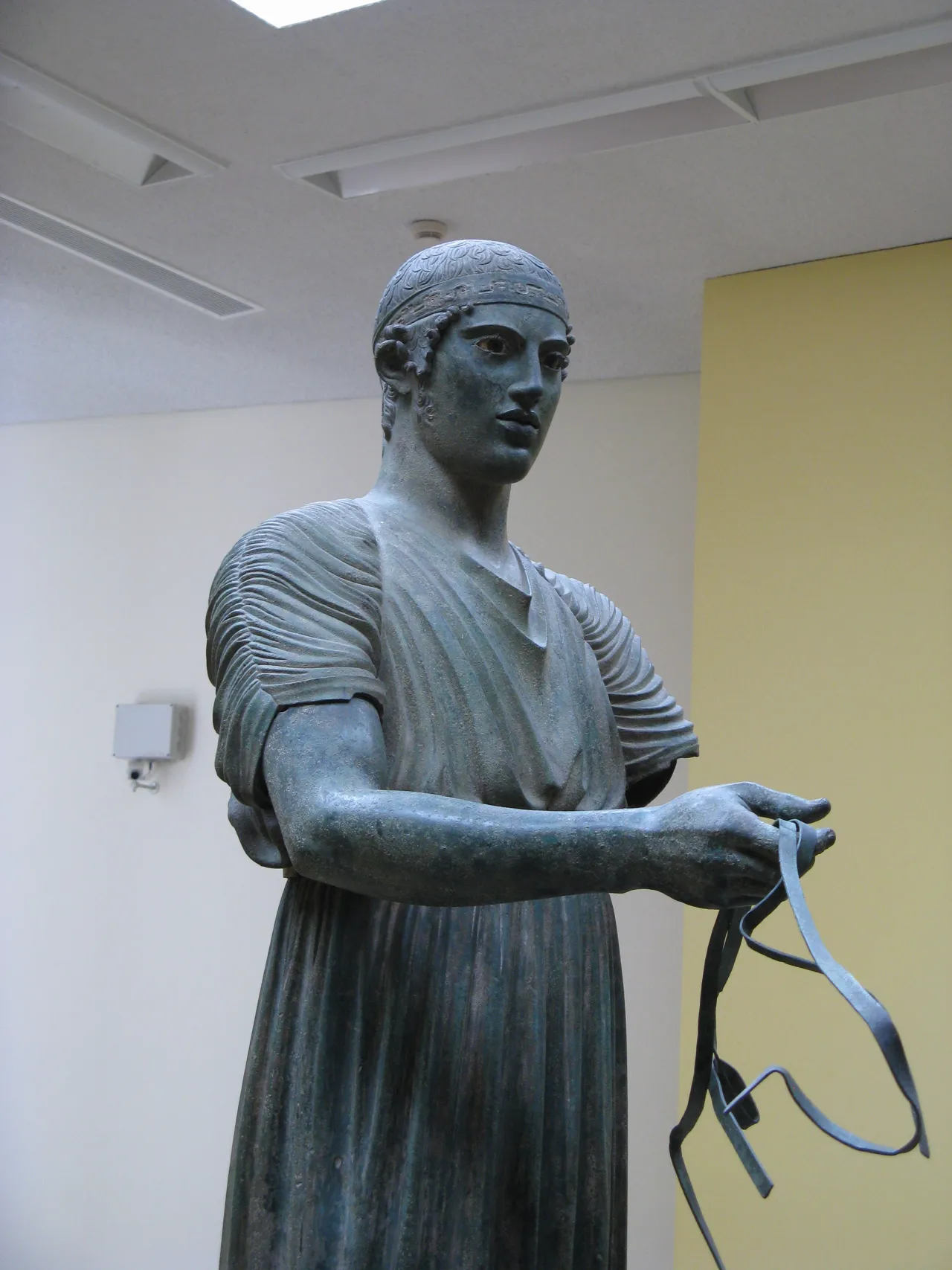
Symbolism and Realism
The Charioteer is depicted not in the heat of competition but in the calm moment after his victory. His face, serene and introverted, exudes a sense of quiet triumph. His body, though still and composed, conveys a subtle shift to the right, suggesting movement and life. This contrast between stillness and potential motion is a hallmark of early Classical Greek sculpture, often referred to as the “Severe Style.”
The statue’s posture is neither rigid nor overly animated. Instead, it strikes a balance between naturalism and idealization, as seen in the fine detailing of the hands and feet. The reins, which the Charioteer holds tightly, along with a riding crop, add to the sense of realism. His gemstone eyes, though still, evoke a deeper sense of inner strength and ethos, reflecting the values of Classical Greece.
The choice to clothe the Charioteer from head to foot is unusual for the time. Most athletes in ancient Greece were depicted nude, as a symbol of their physical prowess and status. The fact that the Charioteer is fully clothed has led some scholars to speculate that he may have been of lower status, possibly even a household slave, which would explain why he was not depicted in the heroic nude tradition.
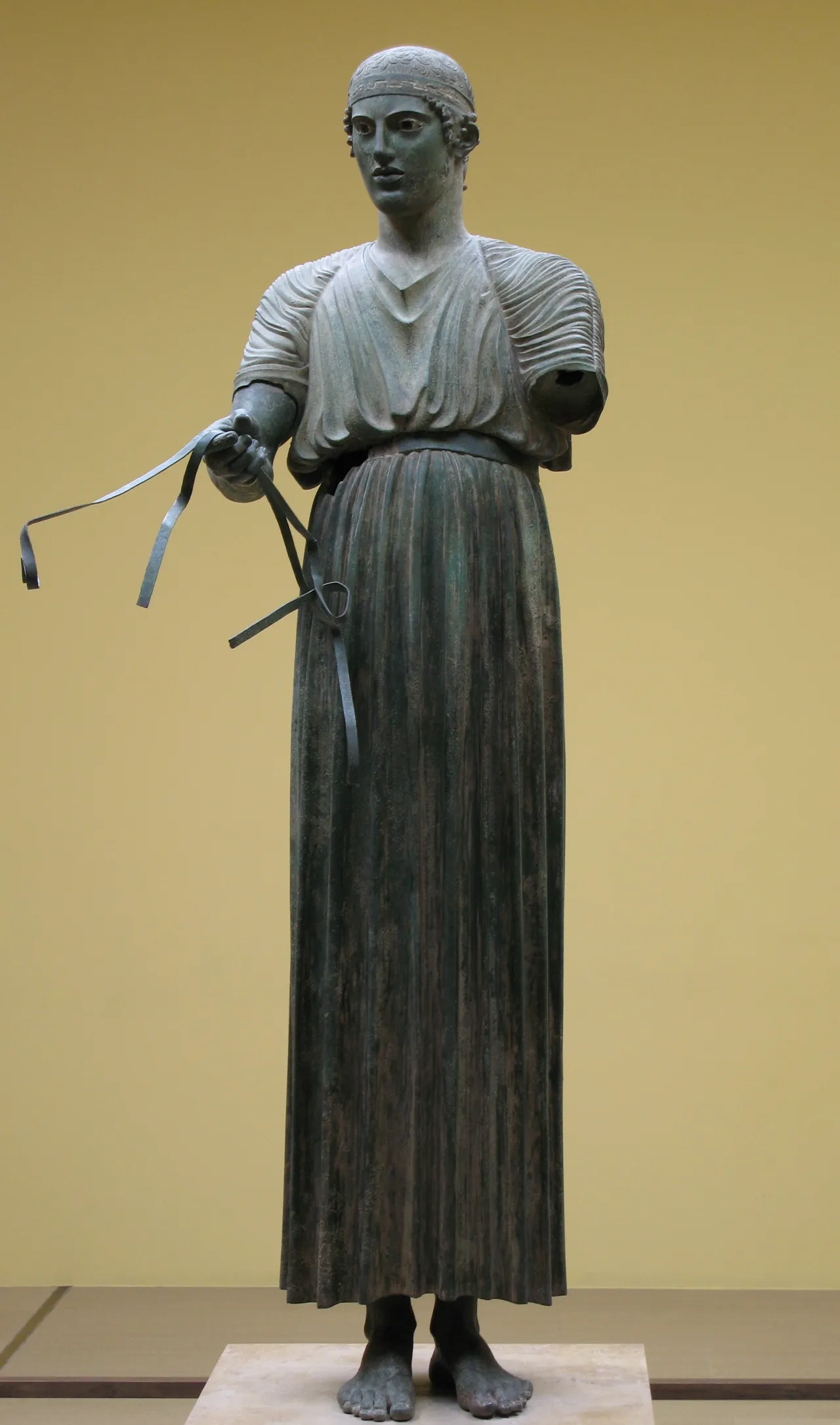
Artistic Influence and Legacy
Stylistically, the Charioteer belongs to the Early Classical period of Greek art, which followed the more rigid and formal Archaic period. The figure’s slight head tilt and naturalistic details, such as the realistic rendering of the feet, mark a departure from the more stylized kouroi statues of earlier times. The absence of the archaic smile, which characterized earlier Greek sculptures, further reflects this shift toward realism and emotional depth.
The Charioteer of Delphi has had a lasting impact on both art and popular culture. In 1907, the Spanish artist Mariano Fortuny y Madrazo created the Delphos gown, a finely pleated silk dress inspired by the statue’s flowing tunic. This dress became a significant piece of early 20th-century fashion and is now considered a work of art in its own right. In fact, a Delphos gown was the only fashion garment included in the Museum of Modern Art’s collection as of 2003, highlighting the statue’s far-reaching influence beyond the realm of ancient art.
Conclusion
The Charioteer of Delphi remains one of the most significant examples of ancient Greek bronze sculpture. Its remarkable preservation, combined with its graceful design and historical context, offers a glimpse into the artistry and cultural values of Classical Greece. Whether admired for its technical brilliance or its serene beauty, the Charioteer continues to captivate both scholars and the public over two millennia after its creation.
Sources:

